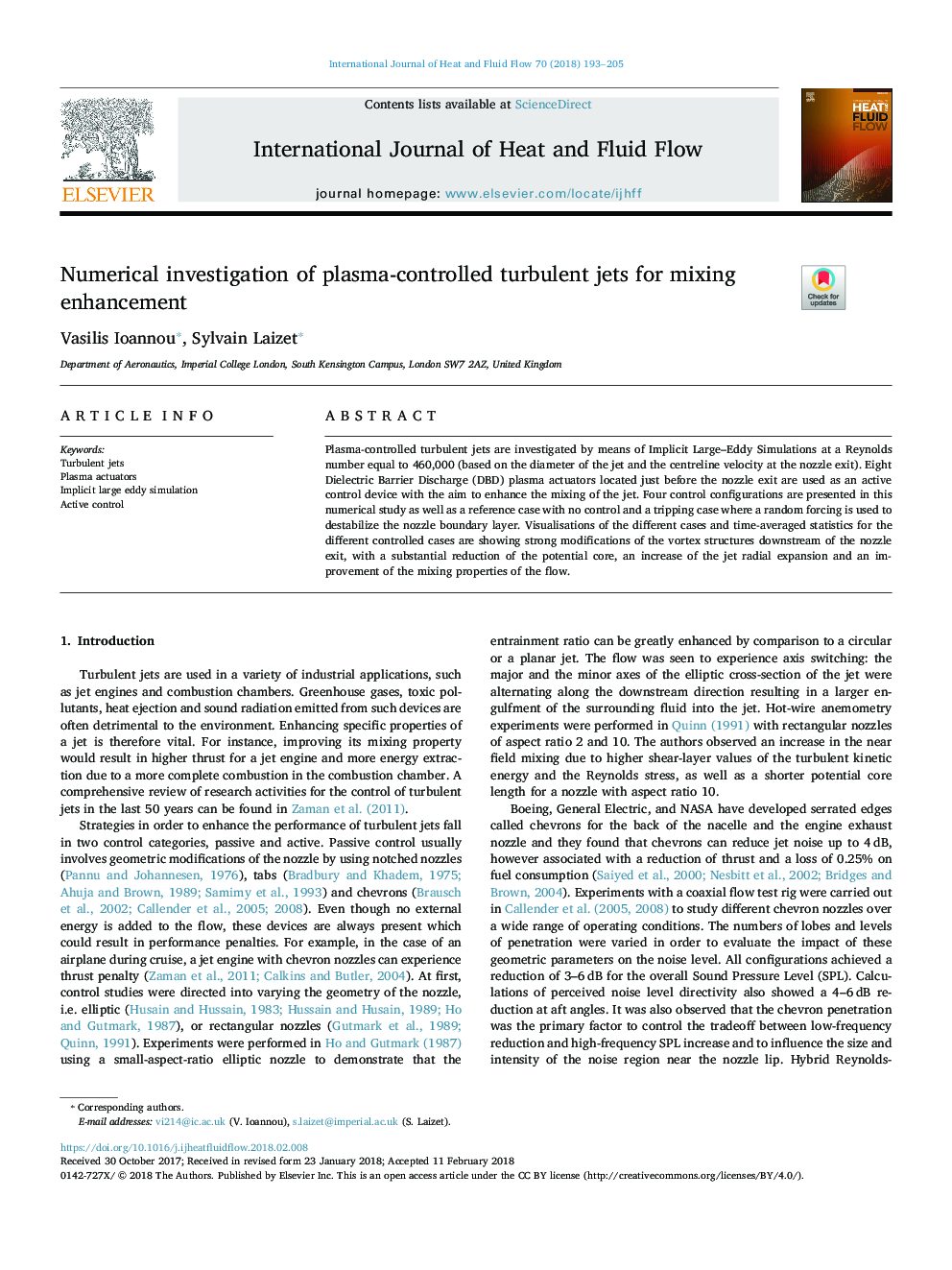| Article ID | Journal | Published Year | Pages | File Type |
|---|---|---|---|---|
| 7053514 | International Journal of Heat and Fluid Flow | 2018 | 13 Pages |
Abstract
Plasma-controlled turbulent jets are investigated by means of Implicit Large-Eddy Simulations at a Reynolds number equal to 460,000 (based on the diameter of the jet and the centreline velocity at the nozzle exit). Eight Dielectric Barrier Discharge (DBD) plasma actuators located just before the nozzle exit are used as an active control device with the aim to enhance the mixing of the jet. Four control configurations are presented in this numerical study as well as a reference case with no control and a tripping case where a random forcing is used to destabilize the nozzle boundary layer. Visualisations of the different cases and time-averaged statistics for the different controlled cases are showing strong modifications of the vortex structures downstream of the nozzle exit, with a substantial reduction of the potential core, an increase of the jet radial expansion and an improvement of the mixing properties of the flow.
Related Topics
Physical Sciences and Engineering
Chemical Engineering
Fluid Flow and Transfer Processes
Authors
Vasilis Ioannou, Sylvain Laizet,
